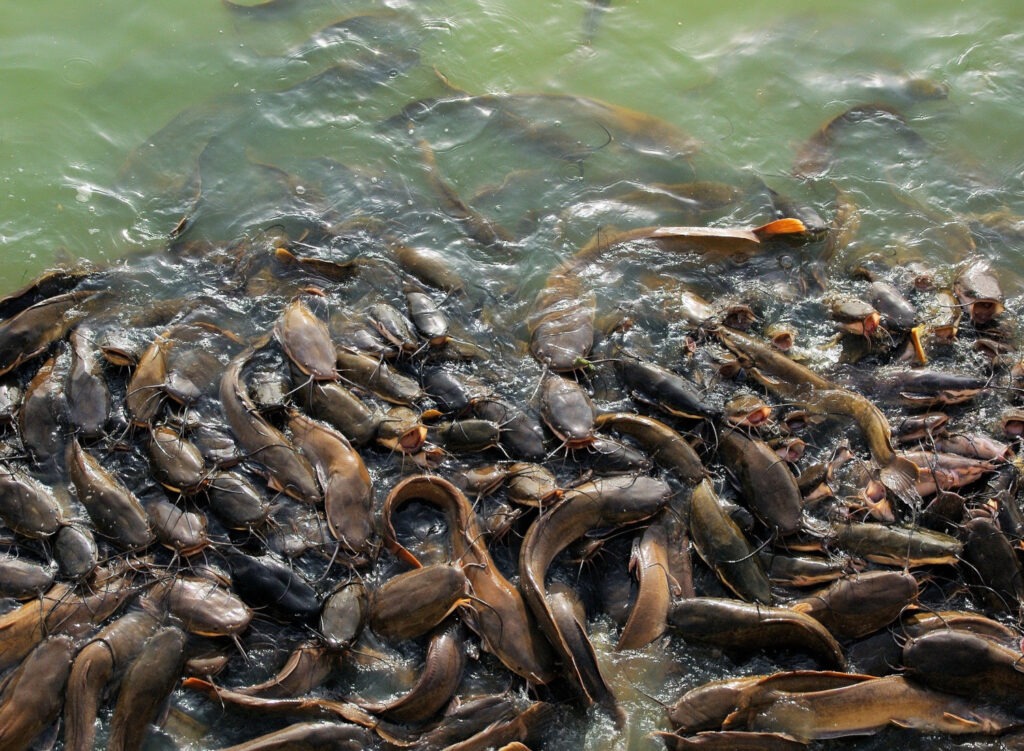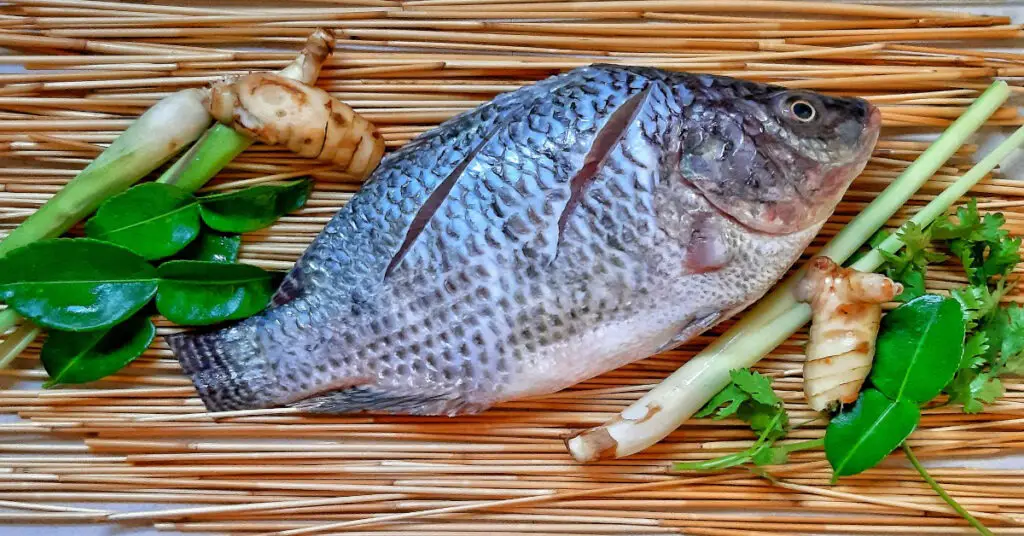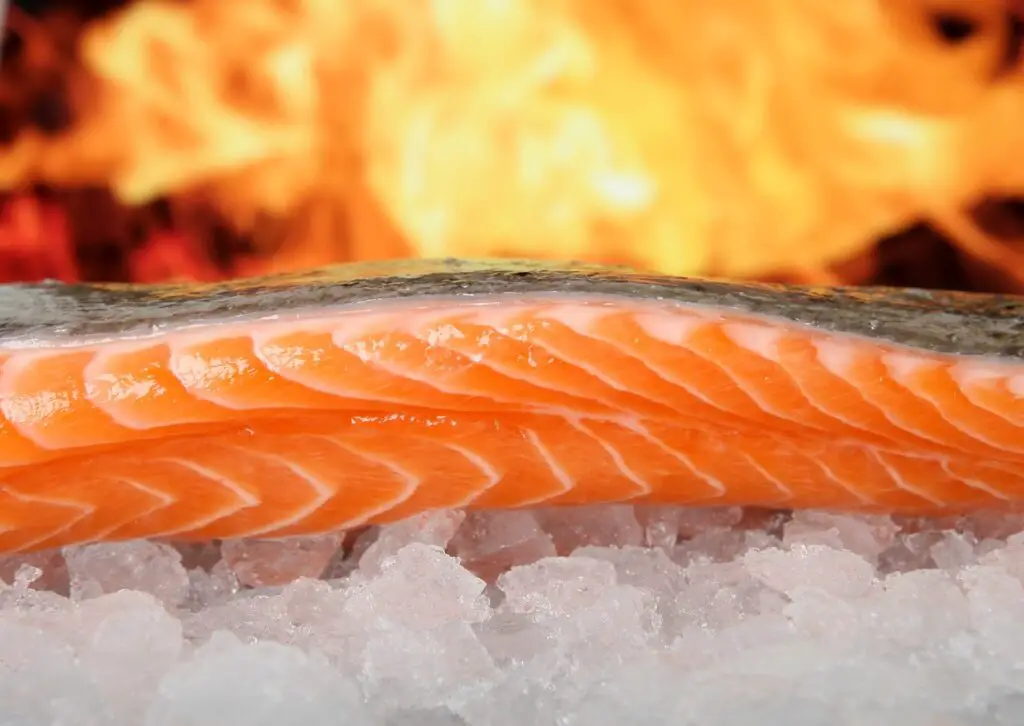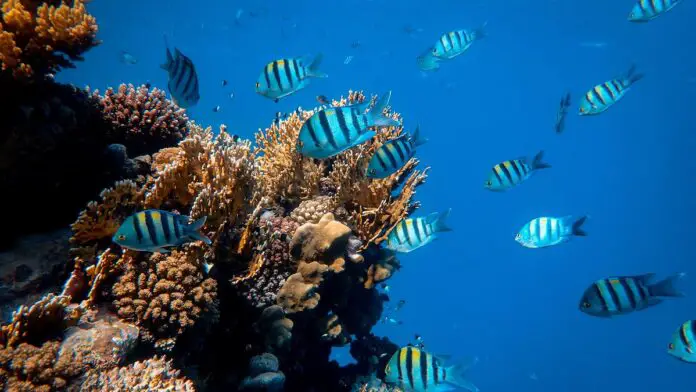Some links on this page may contain affiliate links which means that, if you choose to make a purchase using the link, Agricfy.com may earn a small commission at no extra cost to you. For more information, go to our Affiliate Disclosure Page!
Unlike fishing, fish farming is a technique for producing food. It’s not quite as romantic as scooping a live fish from the depths of the sea, but it’s a lot more practical.
If done correctly, fish farming may provide a consistent supply of protein for a fraction of the energy and labor costs of chasing them down at sea.
Do you want to learn more about the many methods of fish farming? We have created a quick summary of the key systems used in this type of fish farming for you here, so if you are eager, please stick with us. We will give you the core information you need to know.
Types of Fish Farming
We have various types of Fish farming all over the world, and we are going to list the top three and talk about them briefly;
1. Catfish Farming

In terms of overall value and pounds produced, catfish is the “king” of aquaculture.
Catfish are omnivores in the wild, eating a broad variety of animal and plant matter.
The majority of catfish are raised in multiple batches.
Small catfish (fingerlings) are often introduced in the spring, with market-sized fish being removed by seining regularly. Wastes are eliminated by natural processes within the ponds. Therefore, ponds can be kept for years without being drained.
Fingerling catfish are stocked and raised until practically all of the fish have attained market size in single-batch production, after which the whole pond of fish is harvested at once, and the pond is re-supplied.
You can utilize a truck or trailer-mounted hopper with a blower to spray feed pellets over the water surface to feed fish. As a result, the fish feeding reaction can be readily monitored to ensure that your fish are fed adequately but not excessively.
Catfish farming may be quite profitable under the appropriate circumstances. However, catfish farming, like other types of farming, requires a significant amount of cash and is fraught with dangers.
To grow catfish successfully, you must pay attention to them regularly. If you’re thinking about starting a catfish farm, examine the benefits and drawbacks to see if it’s a viable option for you.
2. Tilapia Farming

Tilapia is the world’s second most farmed fish, with commercial farming in over 85 nations.
When done correctly, tilapia farming may be profitable. On the other hand, Tilapia producers must account for the industry’s escalating starting and running expenses. The success of tilapia farm operators will be determined by their ability to keep expenses down while maintaining the health and growth of the fish.
What is the scope of your project? Are you hoping to grow enough for your family’s consumption, or are you hoping to make a lot of money? Knowing how big you want your business to be can help you pinpoint your predicted costs more precisely.
While tilapia farming isn’t as expensive as other fish farming, you’ll still need a large budget to invest in tanks, hire staff, and pay for daily running expenditures like feed, water, and oxygen, as well as other fixed costs.
Check the rules in your area and in your state. For example, is it legal for you to turn your property into a tilapia farm? Do you need to get a business license or permission before you start your business? What other legal conditions must you meet before you may begin?
Ensure you understand what you’re doing. Learn the fundamentals of tilapia cultivation and breeding. It’s hard to keep a business afloat if you go into it blindly. Instead, enroll in short classes, read books, or research tilapia farming online.
Create a safe environment for your tank or pond. If you’re a newbie at equipment installation, enlist the support of professional specialists. Always choose high-quality, long-lasting materials. This will not only save you money in the long run, but it will also ensure that the fish you are raising mature properly.
3. Salmon (Mackerel) Farming

Salmon fish farming surpassed commercial fishing as the most popular way of obtaining salmon in 1996. However, the massive automated processing factories and the sheer volume of fish supplied by the main suppliers have left little opportunity in the market for smaller businesses or individuals.
Salmon fishing is a three-step procedure. First, fresh water tanks are used to hatch salmon eggs. For twelve to eighteen months, the juvenile salmon are nurtured in tanks or in running water channels. They are then relocated to cages near the shoreline, where they are raised until they reach adulthood.
About a week before harvest, you can stop feeding the fish. This allows the fish to get rid of any waste that has accumulated in their digestive tract. The fish are then gathered with nets and placed in carbon dioxide-rich water.
They are anesthetized before their gill arches are cut out, enabling much of the blood to drain. They’re swiftly immersed in an ice-water slurry, which prevents enzymes from spreading and keeps the fish’s color and taste. Finally, they are gutted and processed from the ice slurry.
Atlantic salmon, a $15.4 billion sector, has dominated the upper end of the fish farming market for the past 30 years. Atlantic salmon is one of the most lucrative fish to raise, and it converts feed to body mass and is slightly better than chicken.
Fish Farming Techniques
Fish farming is the fastest-growing seafood industry globally, and it is expected to eclipse all other types of seafood production in the next few years. It has been hailed as a savior and a destroyer of the oceans.
So, who is correct? Fish farming techniques have varying environmental implications, so it’s important to know how your seafood is raised.
1. Open Fish Farming Technique
The breeding of aquatic animals in natural waterways is known as open sea-cage Fish Farming. In various habitats, including freshwater rivers, brackish estuaries, and coastal marine zones, open systems are being introduced. The size of the floating mesh cages varies depending on the operation volume and the species being grown.
2. Semi-closed Fish Farming Technique
Semi-closed Fish Farming is when a species is grown on land, and water is transferred between the farm and a natural river. Wastewater is discharged from the ponds into the nearby river. In contrast, the farm is supplied with new water pumped back into circulation. Prawn farming is the most common type of semi-closed Fish Farming in Australia. It also makes the most extensive use of pond systems.
3. Closed Fish Farming Technique
The land-based raising of aquatic species in raceways, tanks, and ponds is called closed system fish farming. Water is recirculated via filtering processes and returned to the aquaculture system using recirculation technology. This method helps to keep water quality high while minimizing contact with natural streams.
Fish Farming Systems
Currently, there are two primary types of fish farming systems in use: Extensive and Intensive Fish farming systems.
1. Extensive System
An extensive system is built on a semi-natural habitat (for example, existing ponds) with a natural food source for the farmed fish. By “fertilizing” the pond, the system’s food production may be boosted. In addition, stocking the ponds with a variety of species that inhabit different biological niches helps to preserve the system’s natural equilibrium. E.g., tilapia.
2. Intensive System
Closed-circulation tanks or flow-through raceways are common in intensive systems (e.g., trout farming). Floating sea cages, on the other hand, are intense systems that are exposed to nature. These systems have strict controls over oxygen, water purity, and food supply. Water filtration systems in closed-circulation tanks are complicated.
This is a high-cost fish farming method, but the high output rates outweigh the investment. An intensive system requires a high level of monitoring and knowledge to manage properly due to the higher danger of illness and a high level of monitoring and competence. E.g., salmon, sea bass, and tuna.
Types of Aquaculture
Aquaculture is the growing, breeding, and harvesting of aquatic animals and plants in controlled aquatic settings such as seas, lakes, rivers, ponds, and streams. It’s used for various things, including food production, the restoration of vulnerable and endangered animal populations, the improvement of wild stock populations, the construction of aquariums, and fish culture and habitat restoration. The types of aquaculture are listed below.
1. Mariculture
Mariculture is a type of aquaculture that uses saltwater. It can be done close to an ocean, with a sectioned segment, or in ponds distinct from the ocean but still holding seawater. Mollusks, seafood such as prawns and other shellfish, and even seaweed are among the creatures cultivated here.
2. Fish Farming
The most popular kind of aquaculture is fish farming. It entails the selective breeding of fish in freshwater or seawater to provide a food source for human use. Fish farming is heavily exploited since it provides a low-cost source of protein.
3. Algaculture
Algaculture is an aquaculture method that involves growing algae. Algae are microbiological creatures that have traits of both animals and plants. They are motile, like other bacteria, but they also have chloroplasts, which turn them green and enable them to photosynthesize like plants.
Conclusion
Fish farming does not need many resources, to begin with; a simple concrete tank will suffice. The nutritional value of farmed fish is increased by allowing them to develop under observation. As a result, the quality of these fish is higher than that of wild fish. So, you may choose the best type of fish farming that appeals to you.

[…] farming involves the rearing or breeding of various types of fish on a large […]
[…] 3 Types Of Fish Farming – Agricfy.com […]
I am interested in starting fish farming using fingerlings on a pond 10 by 10 m using Dam liner please l need more information
Send me an email daniel@agricfy.com